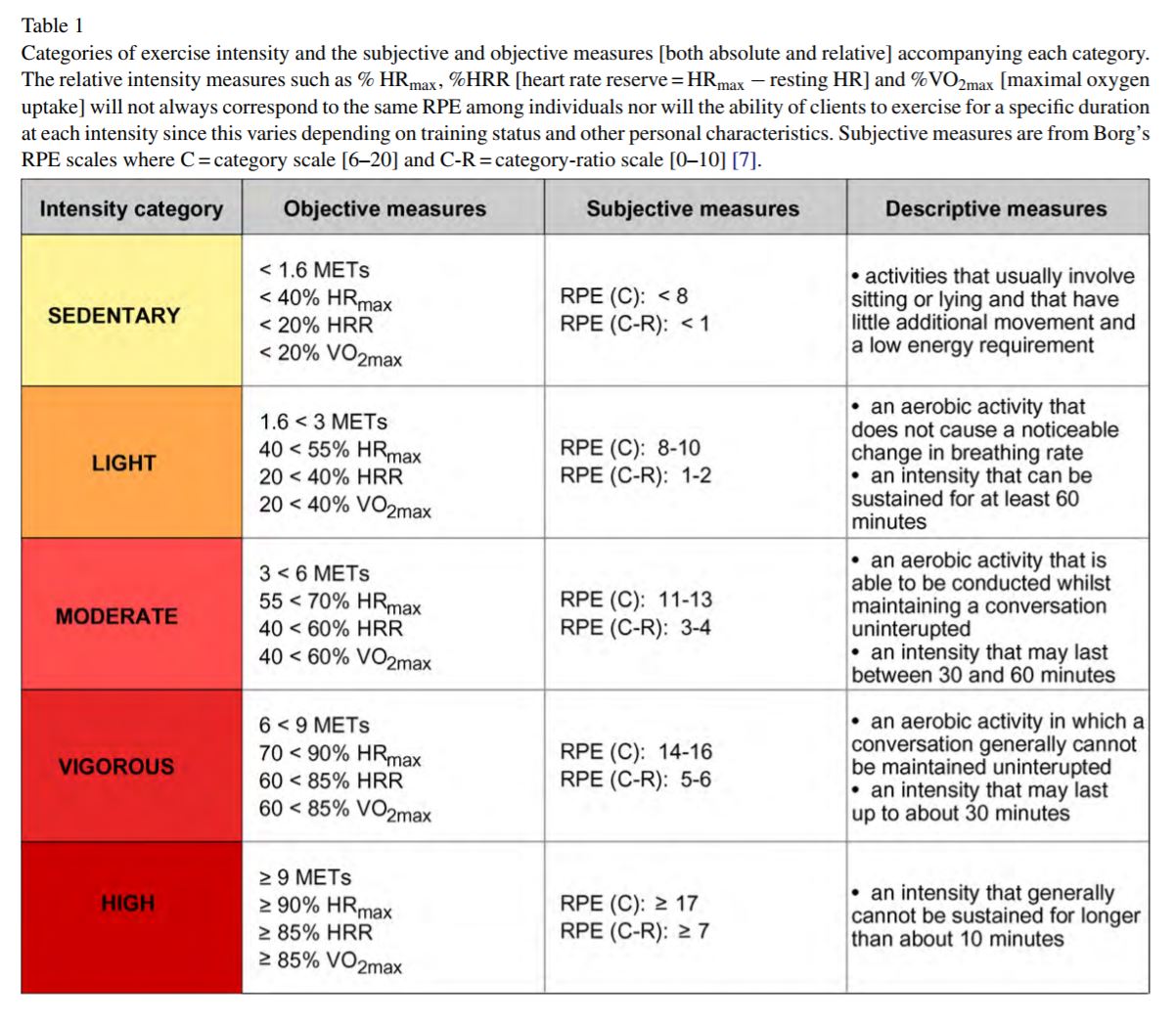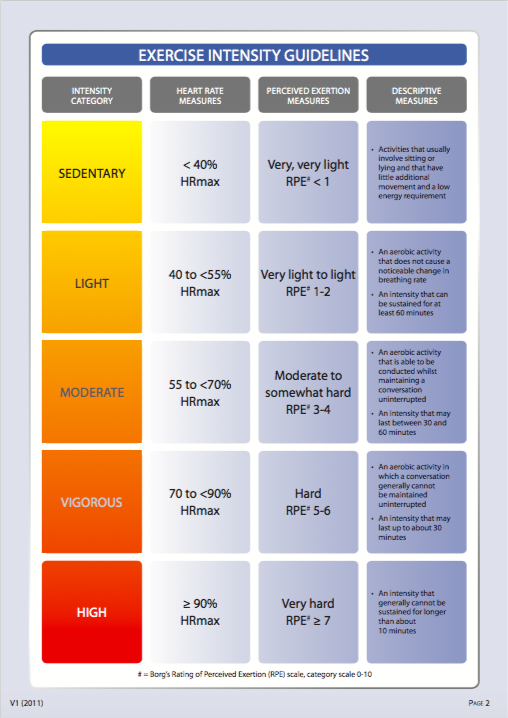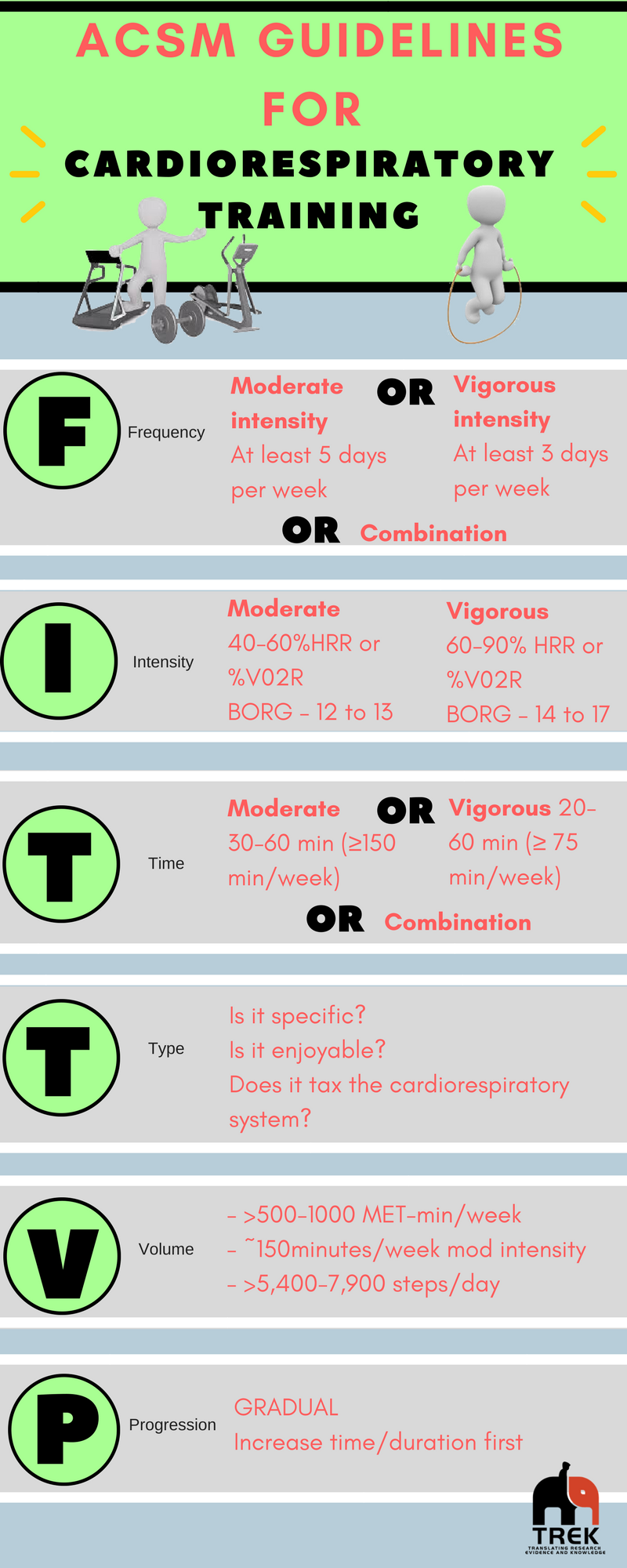There’s more than one way to improve cardiovascular fitness with aerobic or ‘cardio’ exercise. The best activity for you and one you’re likely to stick with — is one you enjoy and that fits easily into your life.
‘WHO’ recommends adults aged 18–64 should do at least 150 minutes of moderate-intensity aerobic physical activity throughout the week or do at least 75 minutes of vigorous-intensity aerobic physical activity throughout the week or an equivalent combination of moderate – and vigorous-intensity activity.
Physical activity and exercise can be performed at different intensities. This should be considered when making recommendations to patients or prescribing exercise for therapeutic purposes. Generally, the more intense the activity, the more benefit there is to be gained from it, however, individual considerations i.e. comorbidities, cardiovascular health etc must be noted;
There are a number of methods to monitor aerobic exercise intensity;
Ratings of perceived exertion (RPE) = Used to express the subjective feeling of exertion during exercise.
Heart rate method
- Target HR = HRmax x %desired intensity
- i.e. 220-age x .75%
VO2 method
- Target VO2 = VO2max/peak x %desired intensity
Metabolic equivalents (METs) = The amount of oxygen consumed while sitting at rest. 1 MET =3.5mL/kg/min. MET is the ratio of a person’s working versus their resting metabolic rate
- MET-min = the number of METs of an activity and the time spent performing that activity
- Kilocalorie (kcal) = the amount of energy needed to increase the temperature of 1kg of water by 1degree celcius
Heart rate reserve = The difference between the resting heart rate (HRrest) and the predicted maximum heart rate (HRmax) = HRmax-HRrest
Calculate heart rate reserve (HRR) = (MaximumHR (220-age in years) – restingHR))
Convert desired intensity into a decimal i.e. if you want 80% intensity; 0.8
Multiply the decimal by HRR i.e. 120×0.8 = 96bpm and 120×0.9 =108bpm
Determine the target heart rate range by adding in the HR
Lower limit (96bpm + 60bpm (Resting HR)) = 156bpm
Upper limit (108bpm + 60bpm (Resting HR)) = 168bpm
Peak VO2. Traditional gold standard for measuring cardiorespiratory fitness. VO2 max. Maximal volume of oxygen per kilogram of body weight per minute. Maximal amount of oxygen that individual can use during intense exercise. Difficult to measure.
Talk test – this is an informal test, which states the when a person can speak comfortably during exercise, their intensity is below that of their anaerobic threshold
ESSA use the following definitions in their position statement on physical activity and exercise terminology:

As with resistance training, health professionals should promote progressive overload of cardiorespiratory/aerobic exercise to encourage physiological adaptations and to avoid training plateaus. Following continued training, the intensity or variable being manipulated needs to constantly be progressed to continue to improve aerobic capacity.
Each aerobic session should consist of a warm up phase, conditioning phase and a cool down phase.
Warm-up phase
– This phase allows the body to adjust to physiologic and bioenergetics demands that are placed on it during the conditioning phase
– 5-10minutes of light-moderate intensity activity
Conditioning phase
– includes aerobic, resistance, flexibility and neuromotor exercise, and/or sports activities.
– at least 20-60mins
Cool down phase
– This phase allows for HR and BP to return to resting levels
– 5-10minutes of light-moderate intensity activity
Stretching
– at least 10minutes of stretching after the warm up or the cool down phase
For more information on designing aerobic training sessions, please see here



